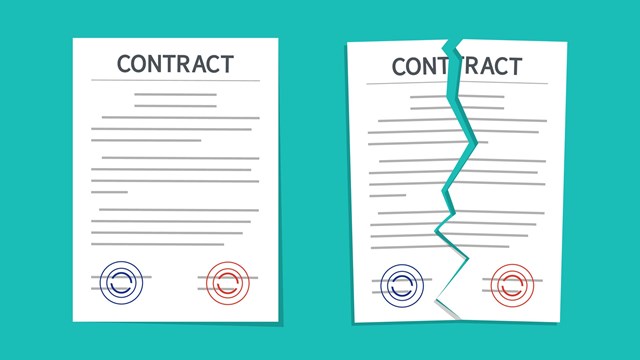Ever since New York City was New Amsterdam, landlords have made extra money by converting unused space in their buildings into residential lofts. While many apartment-seekers gravitated toward these conversions, artists, bohemians, and other creative types were the quintessential tenants—the large, open-plan loft spaces made ideal live/work studios, and they were often to be found in emerging neighborhoods where rents were relatively cheap, even if amenities were rustic.
Converting space from a manufacturing/commercial purpose to residential usage presents certain challenges when it comes to New York City’s zoning laws and regulations. While some loft landlords and their tenants carved out comfortable, safe living spaces in cavernous industrial buildings, others maintained properties that were little better than squats—with no running water, rickety freight elevators, haphazard electrical wiring, and a host of other problems. Cue the Loft Board.
The New York City Loft Board was established in 1982, and charged with the responsibility of bringing loft housing under regulation. The New York City Council enacted Article 7-C of the Multiple Dwelling Law (MDL), also known as the Loft Law, which directed the legalization of illegal residential lofts into “interim multiple dwellings,” or IMDs. The law affected buildings previously used for commercial or manufacturing purposes that had at least three units occupied by residences between April 1980 through December 1981.
The Loft Law
According to the Loft Board’s website, “by definition, an IMD building lacks a residential certificate of occupancy.” Thus, the purpose of the Loft Law, according to the website, “is to bring buildings illegally converted to residential use into compliance with state and city housing laws relating to health, safety, and fire protection.”
The law also serves to protect tenants from eviction and out-of-control rent increases until their building can be issued a Certificate of Occupancy (C of O), which is necessary to insure a building’s compliance with applicable building codes and other housing laws. In order to obtain a revised C of O that would allow residential use of their property, a loft building owner must bring the building up to the city’s residential code, being sure to follow the construction requirements set forth in the Loft Law and New York City Building Code.
In addition, the owners of IMDs not only have to take the usual steps to obtain a residential certificate of occupancy, but they also have to go through special mediation protocols to involve the residential tenants in the planning and execution of the certification process.
“This process, called the “narrative statement process,” allows a residential tenant to object to a building owner’s legalization plans if the planned work would unreasonably interfere with the tenant’s use of his loft unit, and to file alternate plans. An owner cannot obtain a building permit from [the] Department of Buildings unless it has received certification from the Loft Board that the narrative statement process is complete.
Tenants of IMDs have a number of rights. They retain the right to sell any permanent improvements they have made to their personal unit, for example. However the Loft Law also imposes a variety of obligations on tenants. These include certain restrictions on repairs, mandate inspections and retain the landlord’s right to conduct work on their living space. The tenants must permit the owner of the space access to their IMD for all of these purposes
Among other things, the Loft Law created a timeframe for owners to bring their buildings up to code. Once this is done—and not until—can the owners be granted a residential certificate of occupancy.
Additionally, the law required the creation of the New York City Loft Board, made up of both owner and tenant representatives, and implied a number of responsibilities from the start. Some of these responsibilities include the power to settle rent disputes, hear hardship appeals from owners, and handle issues arising over that sticky issue of which tenant should benefit from improvements made by an individual leaving the space.
Inside the Loft Board
Lanny Alexander, the executive director and general counsel for the New York City Loft Board, began working with the group in September 2007. Her responsibilities include coordinating the activities of three units: the legalization unit, the enforcement unit, and the hearings unit.
The Loft Board’s legalization unit “tracks the progress of landlords in converting IMD buildings from commercial space to residences and mediates disputes between landlords and tenants concerning renovation plans,” says Alexander.
The enforcement unit prosecutes landlords “who fail to comply with the legalization deadlines, register the building with the Loft Board annually, or maintain minimum housing standards in their IMD buildings,” she says. And the hearings unit, says Alexander, “adjudicates more than two dozen types of disputes that may arise between landlords and tenants during the legalization process.”
The organization as a whole assists owners in achieving 7-B compliance, which certifies that all of the necessary fire safety work has been completed in their buildings. The Loft Board is also responsible for deciding disputes between owners and tenants— subject only to review by the courts—and is responsible “for promulgating rules to facilitate implementation of the Loft Law, and for overseeing administration of the agency,” says Alexander.
The board itself is made up of nine members appointed by the mayor, and additional Loft Board staff includes an office manager, a receptionist, a chief of records/public information officer, an auditor, and an inspector on loan from Housing Preservation and Development (HPD).
Over the past 25 years, the Loft Board has seen the number of IMD buildings in its jurisdiction dwindle. Back in 1983, there were “914 IMD buildings in our jurisdiction,” says Alexander. “As of August 1, 2008, there are a total of 337 remaining. Of these, 44 have a final certificate of occupancy and are eligible for removal from the Loft Board’s jurisdiction, 224 have building permits and are engaged (we hope) in renovations, 63 are in the narrative statement process, and six have done nothing.”
“We are planning to have more interactions with building owners to help them overcome various construction design problems, access issues, and bureaucratic problems while making sure that the tenants’ lives are not disrupted by the construction,” Alexander says.
Uphill Battles
Despite the Loft Board’s efforts, getting many of the owners of the remaining IMD buildings to comply with regulations can be a real challenge.
“The owners of the remaining buildings have demonstrated a determination to ignore the Loft Law, and—when pressed by the city to legalize—their considerable skills at evading it,” says Alexander. “The Loft Board must deal with the remaining ‘hard core’ of IMD building owners, adopting hands-on legalization methods and pursue vigorous enforcement.”
The Loft Board’s rules allow owners to apply for an extension of deadlines, but these extensions are only granted if the owner has shown persistent efforts to meet the deadline and was still unable to comply with the law for reasons beyond his/her control.
If an owner fails to meet a statutory deadline, the Loft Board does prosecute, and can impose substantial fines.
The Future
In today’s fluctuating economy, most individuals are holding onto their jobs with both hands. However, in the case of the Loft Board, when the remaining 337 buildings are up to code, their founding purpose and ultimate goal will be accomplished—and the board’s job will be done.
“The goal of the Loft Board is to shut down in the next five years,” says Alexander. “So it’s a little odd to have a goal that makes you and your staff unemployed! That will be our greatest accomplishment.”
That said, there are still 191 buildings that have not yet met the New York City Fire Code, for example. And until those last buildings are compliant and up-to-speed, Alexander and the Loft Board have their work cut out for them.
Emily Abbate is a freelance writer and a junior at the University of Connecticut majoring in journalism and political science










3 Comments
Leave a Comment